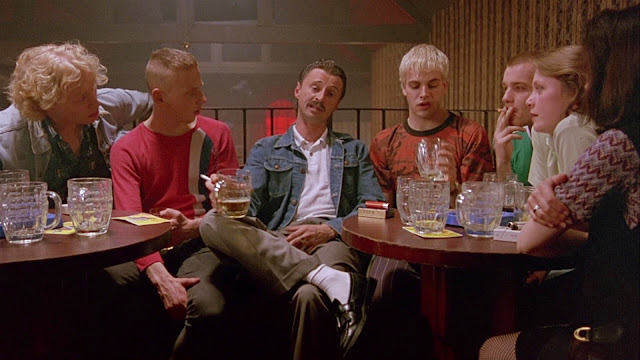Core Study Area 1: Film Form - An Introduction
Film form is one of the core study areas on the new syllabus - this means that, in the exams, you may be asked to discuss the ways in which film form creates meaning for the audience for ANY of the films that we study throughout the course.
It is essential, therefore, that you are able to discuss, in detail, key scenes from each of the films studied - not just in terms of what happens in the scenes but, more specifically, how the director uses camerawork, lighting, editing techniques, elements of mise-en-scene, sound and performance to generate a response from the viewer.
We will look at the opening and closing scenes of each film in detail - analysing them carefully in terms of the way that film form is used by the respective directors, alongside studying at least two other key scenes from each movie. Once you have got the hang of close textual analysis, I would advise you to look at other scenes from each movie and make your own notes on the use of film form - this way, you will build up a portfolio of scenes that you can refer to in the exams.
Film form is everything that filmmakers take into consideration when making a film and it is best to think of it as HOW the content is expressed rather than the STORY itself. When studying, or READING, a film, you must think about what techniques filmmakers use to:
- develop narrative and character
- provoke an emotional response from the audience
- reveal further layers of meaning
- place the film within a particular style or genre
I will give you definitions for different aspects of film form and the specific terms to use - what is crucial is that you discuss HOW THE TECHNIQUES ARE USED TO CREATE MEANING and that you get into the habit of using the terminology as frequently as possible. The definitions are not necessary in your essays - they are simply given so that you understand the techniques used BUT you must use the terms as the foundations of your analysis. I will give you a number of specific reasons why each technique is used and a range of meanings that the techniques create BUT you should be aware that filmmakers often use elements of film form for very different purposes. What is key here is a consideration of CONTEXT - your discussion of the ways in which meaning is created through film form should be based upon what is happening in the scene rather than solely on the definition and effects I have given you.
The starting point for close analysis of a film text is to consider all the essential decisions the director and key creative personnel make when planning the visual and aural (what the audience hear) elements of a film. These elements, known as film form, include:
- CINEMATOGRAPHY (shot distances, camera angles, camera movement, shot composition, lighting)
- MISE-EN-SCENE (setting, props, costume, make-up/hair, figure behaviour, colour)
- EDITING (continuity editing, shot transitions, time and space, pace, experimental editing)
- SOUND (music, sound effects, dialogue, silence)
- PERFORMANCE (body language, movement, posture/stance, facial expression, verbal communication, performance styles)
REMEMBER that you could get asked to discuss the use of film form broadly in relation to particular scenes from the films studied (in which case you should discuss as many aspects of film form as possible and focus on how they work together to create meaning) OR, more likely, a question may focus solely on one of the aspects of film form in relation to a film you have studied, such as the use of sound or mise-en-scene (in which case you should discuss only that area of film form, referencing its use throughout a number of scenes in the film).
By examining these aspects of film form in detail, you will gain further insights into the characters (and their motivations), narrative structure, themes and messages contained within the film. An appreciation and understanding of these elements of film form will also help with your analysis of the other core areas of study, particularly aesthetics and representation, which we will discuss later.
Below are links to more detailed posts on each of the elements of film form, giving definitions of the terms and examples of the ways in which meaning can be created through their use.
Below are links to more detailed posts on each of the elements of film form, giving definitions of the terms and examples of the ways in which meaning can be created through their use.












Comments
Post a Comment